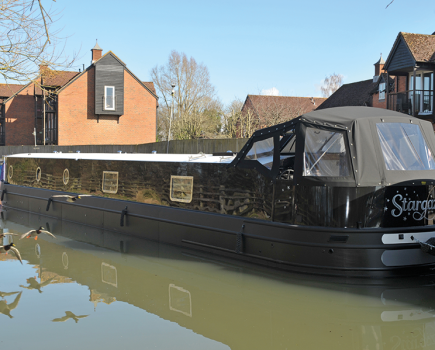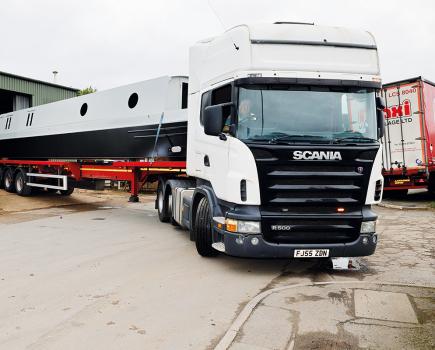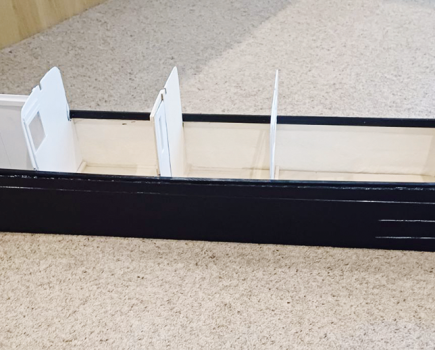A question about replacing batteries on canal boats
Question by Stuart Clarke
We need to replace our three dual purpose wet cell 135 Ah domestic batteries because they went down over the winter. We have had them since 2013. The company we use told us that they now fit AGM batteries to their hire fleet so would we consider those, but they would order the wet cell batteries if we preferred. We are not heavy users of the electrics and have an Adverc battery management unit fitted. The 12v fridge is the heavy user and we do not have a microwave on board or even a toaster. Our lighting is still standard bulbs in the main. We have a diesel stove for central heating with a pump. We normally cruise for twelve weeks between April and late October with 5/6 hours as the normal cruising day. We rely on the engine for hot water and do not have an immersion heater. We have an electric bow thruster with its own two sealed batteries and an inverter/charger used for a 240V TV/radio. We only use an electric kettle and a low power hair dryer when the engine is running. I am hoping that you will be able to tell me whether the AMG batteries would be suitable to replace the old wet cell ones that lasted six years without a problems. At the moment I check the water levels in the batteries including the engine start battery every 10 days or so. I am thinking the company’s hire boats will hit the batteries much harder than we do and I do not know if our use will “under use” the sealed AMG batteries.
Reply by Technical Consultant Tony Brooks
On the point of under working the batteries. Any lead acid battery of any design has a cyclic life that typically shows how many times you can discharge them to a stated percentage and then recharge them. The less you discharge them each time the less cyclic life you use up so under working them is not an issue, its an advantage. However persistent under charging them will be an issue and will shorten their life but getting six years life from dual purpose batteries suggests this will not be an issue for you.
AGM (Absorbed Glass Mat) batteries have an advantage over ordinary flooded cells in that they are supposed to accept a higher charge and also provide a higher discharge potential but I doubt either will be a major advantage for your use. The way they are constructed is also likely to allow a greater cyclic life than ordinary wet cells but check this on the specifications.
At least one vendor of AGM batteries has stated the acceptable charging voltage to be in excess of that which the majority of boats can achieve. They brush this away by saying you can adjust the alternator’s regulator or you need to buy extra equipment at around £300. I stress this is just one well advertised vendor and I suspect, but have no proof, it is their attempt to disallow as many warranty claims as possible. When I asked them to give a reasoned explanation they refused and also got very nasty when pressed, threatening me with legal action. If you decide to go down the AGM route please get their charging voltage requirements in writing before you part with any money. Unfortunately I think this company may well be the most local depot to the company you intend to buy from.
Luckily most, if not all, Advercs are adjustable so in your case it might just be a simple adjustment to meet the charging voltage.
In my view the biggest problem with any form of sealed batteries, including AGMs, is that it makes the testing of batteries very difficult for an ordinary boater. With wet cells you can use a hydrometer and voltmeter to get a fair idea about their state but with sealed batteries you need to take them off the boat, fully charge them, leave to stand overnight, measure and note the voltage, leave to stand for a week and then compare the voltages readings that should be almost the same. That will indicate a shorting cell but will not give much indication of how sulphated they are. Comparing rested voltages and the hydrometer readings of wet batteries does give an indication of sulphation and thus capacity.
If your batteries really need topping up every 10 days or so it indicates one of the following:
1 They are old lead-antinomy batteries and your charging voltage is too high BUT, unlike a sealed cell, that is probably better for them than a low voltage as long as you keep them topped up. Modern wet batteries use lead-calcium plates that accept a higher charging voltage of around 14.7 volts.
2 You have shorting cells, especially if you need to top up individual cells more frequently than when the batteries were new. However the fact they went flat over winter tends to confirm this.
Remember that over discharging or inadequate charging will ruin an expensive battery just as easily as a cheap one.
By all means try AGMs, it won’t do any harm. If you do not leave your batteries on change over the winter I would suggest that you may be better advised to stick with wet open cells and put any savings towards some solar charging so your batteries stay charged over the winter. Standing in a partially discharged state will reduce their capacity and thus shorten the batteries’ life.







